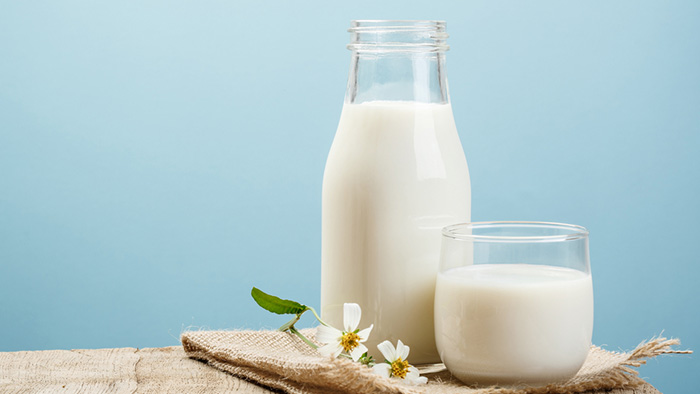
Milk is good for you, but did you know it's becoming better for the planet, too? Delicious and nutritious, milk benefits people and the environment in many exciting ways. Catch up on the latest milk trivia with this at-a-glance primer.
Milk is even more nutritious than you think.
Milk has long been considered a powerhouse beverage that delivers nine essential nutrients: calcium, vitamin D, phosphorus, protein, riboflavin, niacin, pantothenic acid, vitamin A and vitamin B-12.
Then, updated data revealed milk is a good or excellent source of four more nutrients: iodine, selenium, zinc and potassium. These upgraded credentials push the beverage to a natural nutrient content level that few other single foods or beverages can match, offering a total of thirteen vital nutrients.
Since 776 B.C., Olympians have relied on milk to power their athletic performance, a tradition that's stood the test of time. Today, nine out of ten Olympians say they grew up drinking milk, and no wonder.
Milk only has 3 ingredients.
Naturally rich in nutrients like few other beverages, milk only contains three simple ingredients:
* milk
* vitamin A
* vitamin D
Milk is good for society.
U.S. dairy supports over 3 million jobs in the U.S., all while investing in local communities and providing nutrients that American diets often lack. In fact, milk is one of the most affordable sources of protein on the market.
Your glass of milk is becoming more sustainable.
The dairy industry believes a sustainable world is attainable. In 2020, the industry agreed to reach three goals by 2050:
* Become carbon neutral or better;
* optimise water use while maximizing recycling;
* improve water quality.
Farmers, processors and retailers plan to achieve these goals by investing in new products and technologies, adopting on-farm practices that promote a more sustainable planet. For example, Turkey Hill Dairy, in partnership with the Maryland & Virginia Milk Producers Cooperative, helps farmers offset costs of on-farm conservation practices and funds projects to help improve water conservation.
Milk's carbon footprint is smaller than you think.
To gauge its carbon footprint, U.S. dairy was the first agriculture-based industry to commission a full lifecycle assessment in 2008, which revealed, interestingly, that dairy contributes less than 2% of all greenhouse gas (GHG) emissions in America.
In 2017, producing a gallon of milk used 30% less water, 21% less land and emitted 19% less greenhouse gases than it did a decade prior, and the industry isn't stopping there: In 2021, the World Wildlife Fund (WWF) reported that "larger U.S. dairy farms could reduce their net GHG emissions to zero within the next five years."
WWF also noted that "if even 10% of dairy production in the US were to achieve net zero, GHG emissions could be reduced by more than thirteen million tons." Imagine the impact that would make on other industries.
And remember, you can always discard your empty milk containers in good conscience: Plastic milk jugs, paper cartons and glass jars have always been recyclable or reusable. Just be sure to rinse your containers before dropping them in the bin!